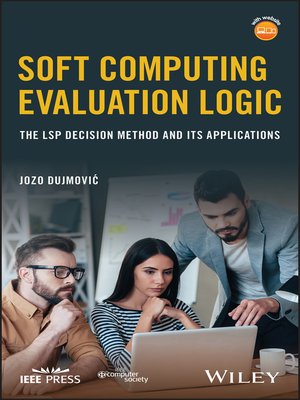Soft Computing Evaluation Logic
ebook ∣ The LSP Decision Method and Its Applications · IEEE Press
By Jozo Dujmovic

Sign up to save your library
With an OverDrive account, you can save your favorite libraries for at-a-glance information about availability. Find out more about OverDrive accounts.
Find this title in Libby, the library reading app by OverDrive.



Search for a digital library with this title
Title found at these libraries:
| Library Name | Distance |
|---|---|
| Loading... |
A novel approach to decision engineering, with a verified framework for modeling human reasoning
Soft Computing Evaluation Logic provides an in-depth examination of evaluation decision problems and presents comprehensive guidance toward the use of the Logic Scoring of Preference (LSP) method in modeling complex decision criteria. Fully aligned with current developments in computational intelligence, the discussion covers the design and use of LSP criteria for evaluation and comparison in diverse areas, such as search engines, medical conditions, real estate, space management, habitat mitigation projects in ecology, and land use and residential development suitability maps, with versatile transfer to other similar decision-modeling contexts.
Human decision making is rife with fuzziness, imprecision, uncertainty, and half-truths—yet humans make evaluation decisions every day. In this book, such decision processes are observed, analyzed, and modeled. The result is graded logic, a soft computing mathematical infrastructure that provides both formal logic and semantic generalizations of classical Boolean logic. Graded logic is used for logic aggregation in the context of evaluation models consistent with observable properties of human reasoning. The LSP method, based on graded logic and logic aggregation, is a vital component of an industrial-strength decision engineering framework. Thus, the book:
With quantitative modeling of human reasoning, novel approaches to modeling decision criteria, and a verified decision engineering framework applicable to a broad array of applications, this book is an invaluable resource for graduate students, researchers, and practitioners working within the decision engineering realm.







